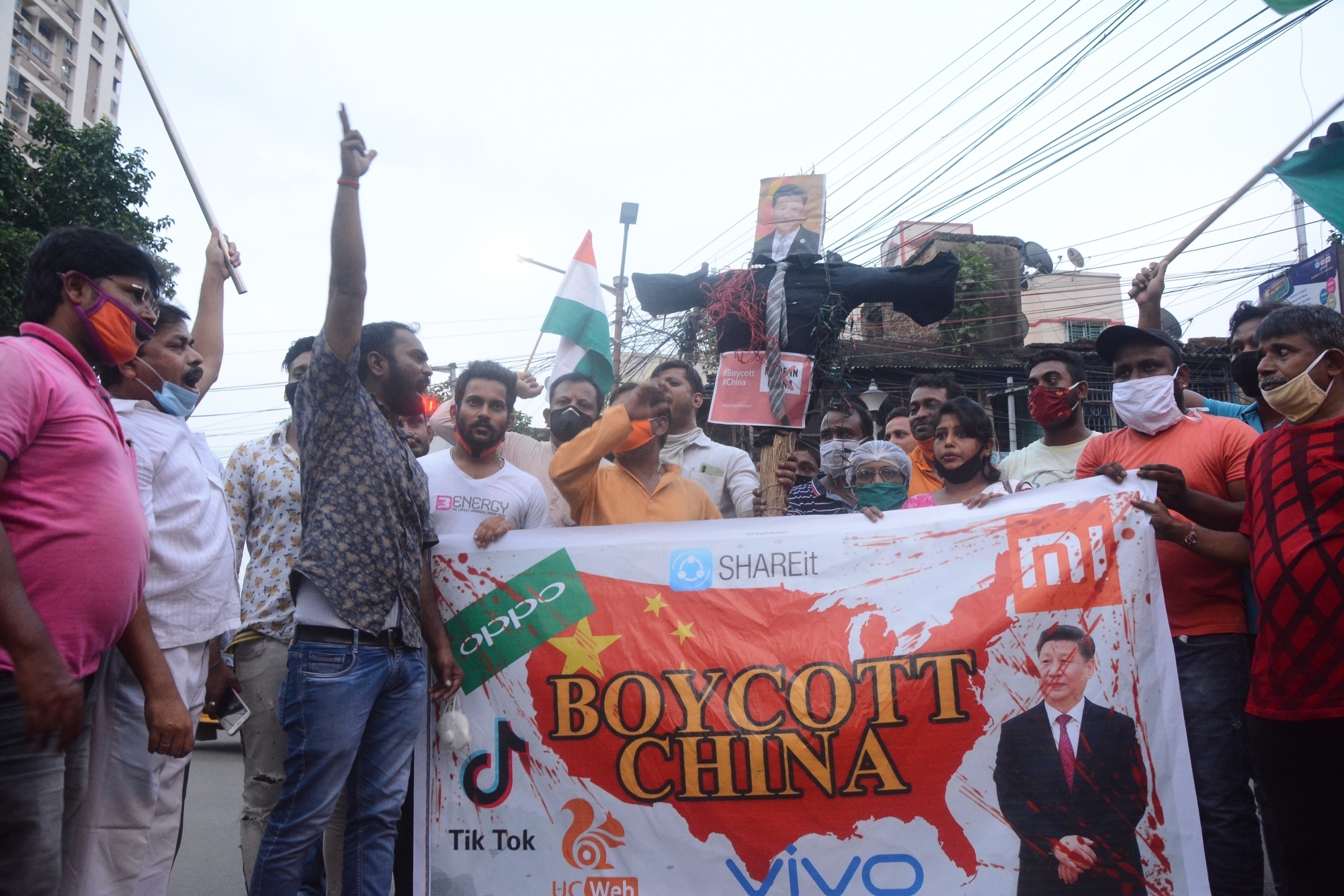New Delhi should be prepared for short term economic damage.
In the last one week, India and China relations have seen a setback of over 40 years, a setback that is unlikely to be undone by heft diplomacy anytime soon. And once again, cries for boycotting Chinese goods and companies that have flooded Indian markets are getting shrill. Calls that were last heard three years ago at the height of the Doklam stand-off, only to lead to more trade and higher deficit by India since then. Except that this time, the government has taken two decisive steps—cancelled an order by the Railway ministry and sent a directive to State-run telecom PSUs not to do business with Chinese vendors. This author will argue that New Delhi will need a multi-pronged approach and a stomach to digest the economic damage, including loss of jobs, to inflict pain to the Chinese.
While China accounts for 5% of India’s exports and 14% of our imports in value terms, India’s imports to China account for 3% of China’s total exports and China’s imports from India are less than 1% of its total imports. If India and China stop trading, China would lose only 3% of its exports and less than 1% of its imports, while India will lose 5% of its exports and 14% of its imports. This is the nature of trade largely due to the size of the two economies—China is five times the size of the Indian economy. Therefore, India will not be insulated from the economic damage of #boycottchinesegoods.
Since BSNL and MTNL have been given clear instructions by the Ministry, telecom is a good starting point to understand not just policy flip-flop on Chinese companies, but the massive dependence of Indian companies on Chinese vendors and suppliers. Most private telecom operators’ network in India is run on Chinese equipment provided by companies like Huawei and ZTE. European counterparts like NSN and Alcatel Lucent have been edged out due to cost compulsions that are most acute in Indian telecom which has the cheapest call rates in the world. So, policy expectation of no business impact (either in terms of squeezed margins or higher call rates) is unrealistic when cheap Chinese vendors will be rejected. The point is, replacement of cheap Chinese vendors will entail a cost and will have to be borne by every Indian as we look to avenge the death of our brave hearts. As for policy flip-flops, despite multiple concerns and multiple reports, India allowed Huawei to participate in 5G trials, unlike the clear position taken by US and the UK just last month.
Identifying a roadmap for alternate supply chains will be needed in several sectors. From pharmaceuticals where 90% of APIs come from China to solar panels where 84% of National Solar Mission needs are catered by Chinese companies. Likewise in electronics, garments, auto ancillaries. So while outright ban of Chinese imports may be difficult since it will throw out of gear large Indian business interests, what is needed is a clear plan on how to replace Chinese imports. Parallel to this will be the need to bolster Indian manufacturing and local production. The first sector where priority has to be given is healthcare where due to several concerns the government must immediately work towards reducing Indian pharma’s (largest in volume terms) over reliance on Chinese imports. Now, India needs a consistent, forward-looking, manufacturing-oriented policy framework and a reorientation in policy mindset. Unless we bring down our land, labour, capital costs, no industry will thrive, and most certainly not be able to replace the needs of Indian producers that are currently being met by Chinese imports of raw materials and intermediate goods.
“Make In India” has seen partial success only in the mobile and electronic sphere and the landscape is largely dominated by Chinese companies like Vivo. It is time to now think creatively to expand the scope of manufacturing in India. In UPA2 era, the then Commerce minister Anand Sharma had mooted the idea of national manufacturing zones—much larger in scope than the failed and poorly implemented SEZ policy. It is time to revisit such ideas.
Inflicting economic pain on China will require a larger vision to grow our economic might and not just through a trade war that limits bilateral trade and hurts both countries. In the long run, we need to get back on the track to be a $5 trillion economy.
Gaurie Dwivedi is a senior journalist covering economy, policy and politics.

